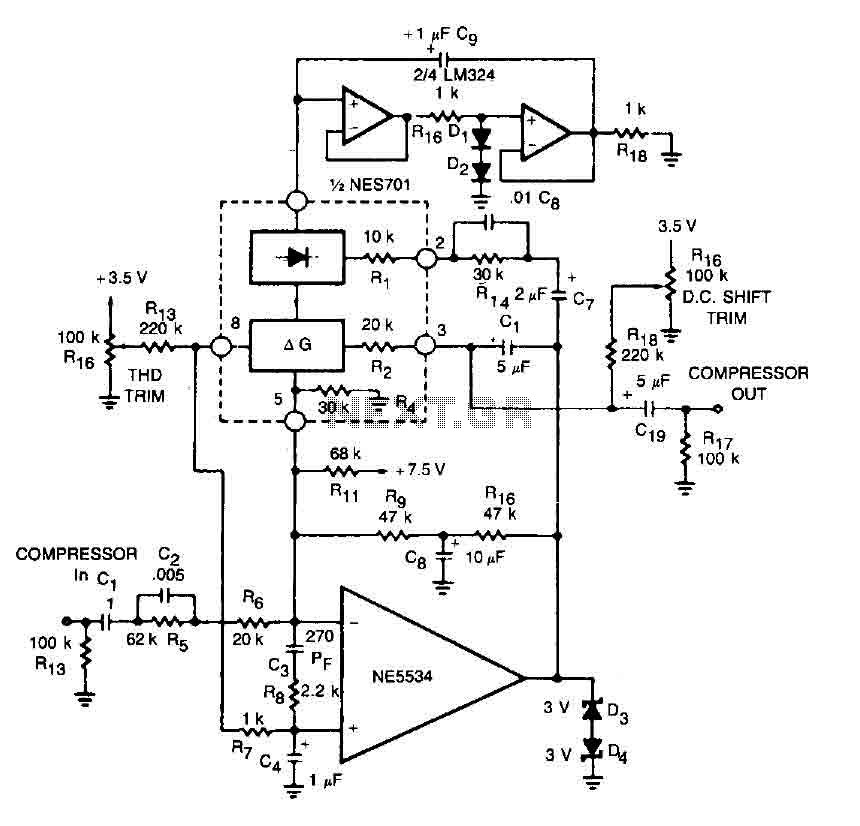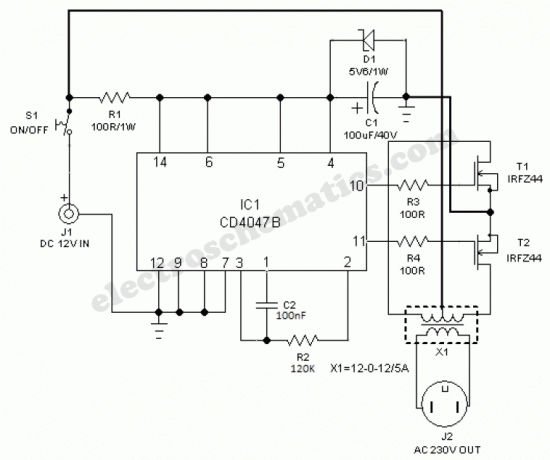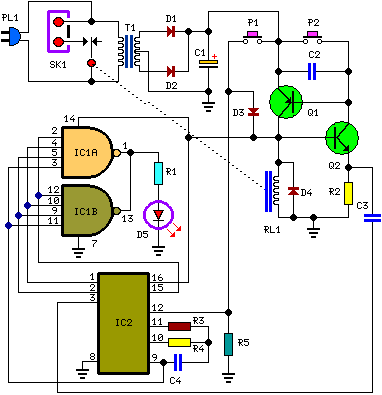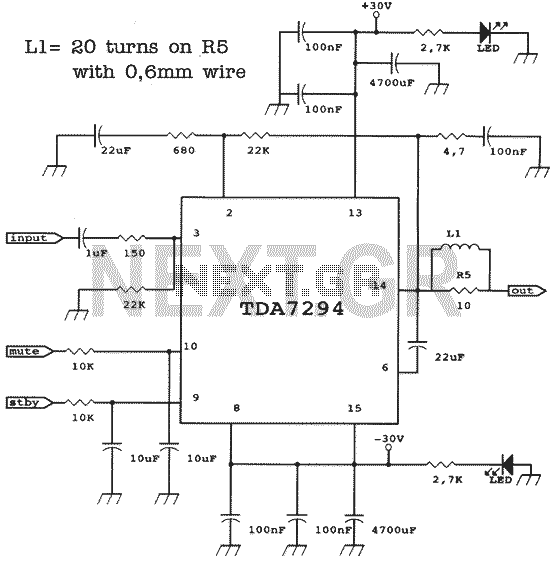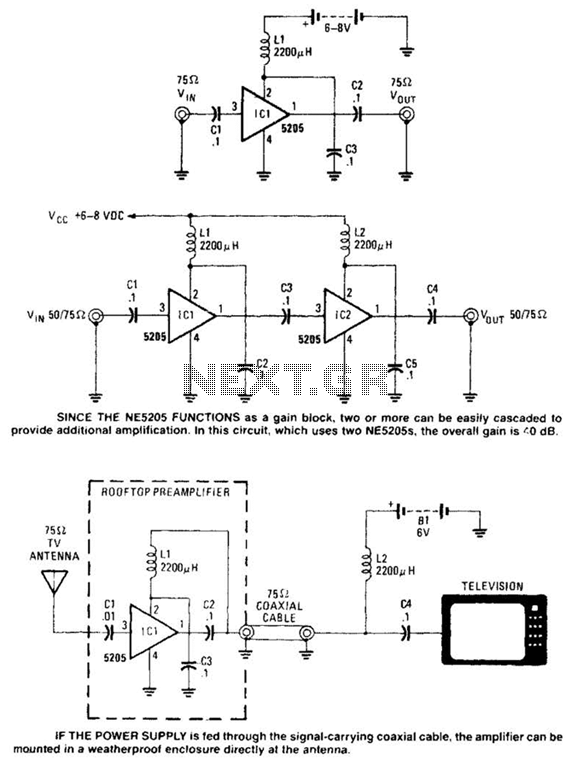
Schematic 2.1 Channel Systems-Dual Power Amplifier TDA7240 and TDA1517Circuits
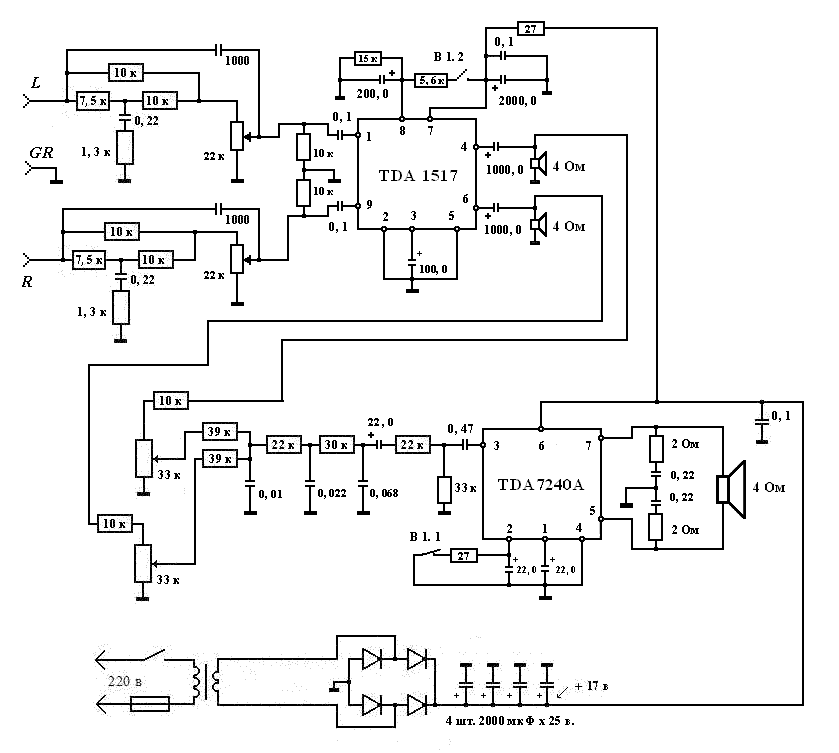
The primary issue with the design of a stereo amplifier that includes a total bass driver is that the signals from the left and right channels eventually become combined. This summation process minimizes the separation between channels, compromising the fundamental concept of stereo sound. The most effective method of signal summation currently known involves using active mixers and filters with high input impedance, typically employing field-effect transistors. Subsequent stages amplify the signal's amplitude. An alternative approach was explored to attenuate the channel signals and delay their addition until just before the signal reaches a high-sensitivity input (TDA 7240 - 46dB). The second chip, TDA 1517, functions as a mid-frequency driver. It should be noted that the issue is not completely resolved, as the desired channel separation remains insufficient. Subjective listening tests indicated a constricted soundstage and a lack of airiness, which are characteristics typically found in amplifiers with independent channels. Listening to music with this device can be somewhat fatiguing; however, it effectively reproduces audio from films and computer games. In any case, the amplifier has demonstrated significant advantages over a multimedia system like the Logitech Z-340, which a friend recently purchased for $60. Another positive aspect is the implementation of simultaneous volume control across all channels, which is quite convenient. Therefore, this scheme is recommended for use in 2.1 channel systems, with potential for further improvements.
The described stereo amplifier design addresses the common challenge of channel summation by utilizing specific components and configurations to enhance audio fidelity. The active mixers and high-impedance filters serve as crucial elements in maintaining signal integrity while minimizing unwanted crosstalk between channels. Field-effect transistors (FETs) are particularly advantageous due to their high input impedance, which helps to preserve the original audio signal's characteristics.
In this design, the TDA 7240 chip is strategically employed to manage the high-sensitivity input, allowing for greater control over the signal processing chain. By delaying the summation of channel signals until the final stage, the design aims to improve channel separation and overall sound quality. The TDA 1517, as a mid-frequency driver, is integral to managing the frequency response and ensuring that the audio output remains balanced across the spectrum.
Despite these advancements, the subjective listening experiences indicate that further refinements are necessary to achieve optimal channel separation and soundstage depth. The observations regarding the constricted panorama and lack of airiness suggest that additional filtering or signal processing techniques may be warranted.
The amplifier's performance in reproducing film and game audio is noteworthy, indicating that while it may not be ideal for critical music listening, it excels in entertainment applications. The comparative analysis with the Logitech Z-340 highlights the potential for this amplifier to serve as a superior option in its class.
The inclusion of a simultaneous volume control feature across all channels adds to the user-friendly aspect of the design, enhancing its practicality for various listening environments. Overall, this amplifier design is recommended for use in 2.1 channel systems, with opportunities for future enhancements to address the identified limitations in audio fidelity and channel separation.The main problem with the design of stereo amplifier with a total bass driver, is that the signals of left and right channels, sooner or later, are summarized. As a result of merely adding up, the separation between channels is reduced to a minimum and violated the very idea stereofonii.
The most efficient method of summation, known today - signal active smesitelyami - filters with high input impedance, which is often used by field-effect transistors. Subsequent cascades enhance increase the amplitude of the signal. I tried to make some other way - most to weaken the signals of channels and to make their addition, as late as possible, before entering signal with high sensitivity (TDA 7240 - 46dB).
The second chip-TDA 1517, serves as a mid-frequency driver. I must say that the problem is not solved completely, the separation between channels is desirable to do more, subjective listening showed a contraction of panoramas, lack of air, which is inherent in amplifiers with independent channels. Listen to music using the device somewhat tiresome, but it very effectively transmits audio material of films and computer games.
In any case, the amplifier has shown significant superiority over the multimedia system Logitech Z - 340, which is one of my friends recently bought for $ 60. Another nice time - managed to realize the possibility of simultaneous volume in all channels, which will agree, very convenient.
Thus, the scheme was recommended for the recurrence of 2. 1 Channel Systems, with the prospect of it improving. 🔗 External reference
The described stereo amplifier design addresses the common challenge of channel summation by utilizing specific components and configurations to enhance audio fidelity. The active mixers and high-impedance filters serve as crucial elements in maintaining signal integrity while minimizing unwanted crosstalk between channels. Field-effect transistors (FETs) are particularly advantageous due to their high input impedance, which helps to preserve the original audio signal's characteristics.
In this design, the TDA 7240 chip is strategically employed to manage the high-sensitivity input, allowing for greater control over the signal processing chain. By delaying the summation of channel signals until the final stage, the design aims to improve channel separation and overall sound quality. The TDA 1517, as a mid-frequency driver, is integral to managing the frequency response and ensuring that the audio output remains balanced across the spectrum.
Despite these advancements, the subjective listening experiences indicate that further refinements are necessary to achieve optimal channel separation and soundstage depth. The observations regarding the constricted panorama and lack of airiness suggest that additional filtering or signal processing techniques may be warranted.
The amplifier's performance in reproducing film and game audio is noteworthy, indicating that while it may not be ideal for critical music listening, it excels in entertainment applications. The comparative analysis with the Logitech Z-340 highlights the potential for this amplifier to serve as a superior option in its class.
The inclusion of a simultaneous volume control feature across all channels adds to the user-friendly aspect of the design, enhancing its practicality for various listening environments. Overall, this amplifier design is recommended for use in 2.1 channel systems, with opportunities for future enhancements to address the identified limitations in audio fidelity and channel separation.The main problem with the design of stereo amplifier with a total bass driver, is that the signals of left and right channels, sooner or later, are summarized. As a result of merely adding up, the separation between channels is reduced to a minimum and violated the very idea stereofonii.
The most efficient method of summation, known today - signal active smesitelyami - filters with high input impedance, which is often used by field-effect transistors. Subsequent cascades enhance increase the amplitude of the signal. I tried to make some other way - most to weaken the signals of channels and to make their addition, as late as possible, before entering signal with high sensitivity (TDA 7240 - 46dB).
The second chip-TDA 1517, serves as a mid-frequency driver. I must say that the problem is not solved completely, the separation between channels is desirable to do more, subjective listening showed a contraction of panoramas, lack of air, which is inherent in amplifiers with independent channels. Listen to music using the device somewhat tiresome, but it very effectively transmits audio material of films and computer games.
In any case, the amplifier has shown significant superiority over the multimedia system Logitech Z - 340, which is one of my friends recently bought for $ 60. Another nice time - managed to realize the possibility of simultaneous volume in all channels, which will agree, very convenient.
Thus, the scheme was recommended for the recurrence of 2. 1 Channel Systems, with the prospect of it improving. 🔗 External reference
